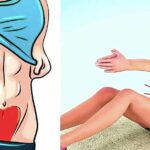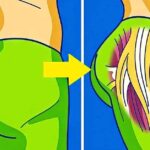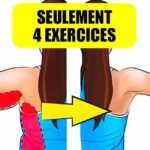Strengthening the bust as well as all parts of the body is possible with pilates exercises. These are accessible to a large number of people since the exercises are adaptable and non-traumatic. Created by Joseph Pilates in the 20s, this method aims to strengthen muscles in depth. Manuela Sanchez, Pilates instructor at the Booklyn Pilates Club in New York, explains the benefits of this effective method. For the expert, Pilates is a workout that targets the core muscles with each exercise. Strengthening the core with pilates involves the rectus abdominis muscles, obliques, transverse abdominals, hips, lower back, and pelvic floor. All these muscles once strengthened, improve posture and keep the spine stable.
What are the benefits of pilates exercises?
In addition to strengthening the core area of the body, pilates has other benefits. The exercises are accessible to everyone and don’t require any equipment, just a yoga mat and that’s it! You don’t have to go to a gym to practice. As Alycea Ungaro, author of 15 Minutes Everyday Pilates, corroborates, it is possible to perform the movements at home without equipment. The expert explains to WebMD magazine that it is recommended to check with a doctor if you have a health problem before starting Pilates sessions.
From the comfort of your home, you can sculpt your body. In addition to this, you can:
- Increase flexibility
- Improve body balance
- Improve muscle and mental coordination
- Optimize breath awareness.
What are the good basic exercises of Pilates?
Whether for beginners or for the more experienced, there are suitable exercises. The basic exercises include classics that can be performed by most. We have 17 exercises to offer you that you can do at home without any equipment required. Sanchez suggests using some of them as a warm-up for a workout or performing them to work your core. Other exercises offered will be perfect for a session of quick movements. The main thing is to practice each movement for 30 seconds if you are a beginner and increase the pace up to 1 minute with practice. Are you motivated? We’re going!
Pilates hundred
The hundred allows you to sheath the body to perform all the other pilates exercises. As explained by Alycea Ungaro, this exercise allows you to have a flat stomach by engaging the abdominals.
- Lie on your back;
- Lift both legs toward the ceiling, with your toes outwards;
- Raise your head high so as not to contract the neck and then beat with your arms;
- Do not arch your back while performing the movement.
Single leg stretch
It is an exercise that strengthens the abdominals, transverse and quadriceps.
To perform this exercise, simply:
- Lie on your back
- Alternately bring both knees towards the chest, resting the head on the floor;
- Keep your lower back straight on the floor.
Circle with one leg
It’s an exercise in stabilization and concentration. It works the muscles of the hip and legs. To perform this movement, follow these steps:
- Lie on your back with your arms at your sides and inhale through your nose and then exhale through your mouth;
- Bend your left knee and then lift your right leg;
- Make movements in a circle with the right leg keeping the knee bent while keeping the lower back glued to the ground, the leg movement starts from the hip. The left knee must not move;
- Do the same movement with your left leg.
Cross abs
This pilates exercise allows you to work the abdominal strap with, at the end of the day, a flat stomach.
- Lie on your back and bring your knees to your chest;
- Raise your head slightly by placing your hands behind the nape of your neck;
- Extend the right leg as you exhale and flex the left leg;
- Touch the left knee with the right elbow and then the right knee with the left elbow.
- Continue alternating sides.
Double Leg Stretch
This exercise is effective in strengthening the abdominals.
- Lie on your back with your head slightly raised;
- Bring both knees at the same time towards the chest by placing your hands on the knees;
- Extend your legs, keeping them as straight as possible while raising your arms to the sky, then bring your knees towards your chest.
Scissor Stroke
This exercise is ideal for working the abs but also for stretching the hamstrings.
- One lies on one’s back, hands under one’s head;
- We raise our legs towards the ceiling;
- We lower one leg and alternate with the other leg while leaving the soles of the feet towards the ceiling.
For the more experienced, it is possible to perform this movement with the head slightly raised.
Teaser
This exercise is a real challenge for beginners in pilates.
- Lie on your back with your knees bent towards your chest and your arms at your sides;
- Stretch your arms towards the ceiling and extend your legs at 45°;
- One tries to sit down by reaching the ankle, with the chest raised;
- The chin is brought towards the chest while inhaling and exhaling;
- Roll the spine downwards with your arms open at your sides;
- Repeat the movement for 30 seconds;
- Squeeze your knees at the end of the exercise to relax the muscles.
Plank Leg Lift
To work the gluteal abs, this exercise is effective.
- We get on our elbows in a plank position;
- Keep your back straight, you squeeze your buttocks;
- The right leg is raised slightly in the air and lowered slowly;
- Repeat the exercise with the left leg.
Pendulum
It is an exercise that stretches the front and back muscles of the thighs. The pendulum engages the buttocks, thighs but also the abdominal strap.
For this exercise,
- We lie on our backs, with our arms spread at our sides;
- Bend your knees and then let them fall to the right while keeping your back straight on the floor;
- Return to the initial position and then make the same movement but to the left this time.
Plank rock
To work the abs, strengthen the stomach and increase the stability of the back, nothing better than the plank exercise. Here is a variation of this training:
- Get into the plank position with your hands under your shoulders;
- Tilt your body forward a few centimeters and then backwards;
- With this exercise, the abdominals, buttocks and quadriceps are engaged.
Side Board
This exercise is effective in strengthening the lateral muscles. The shoulder is very stressed and therefore requires a lot of caution, especially if your shoulder is unstable.
- Place your elbow on the mat below the shoulder, with your legs extended in line with your body;
- Lift the pelvis off the mat and then bring it back to the floor.
Bird dog
It is an excellent exercise to stretch the spine and work on the alignment of the abdominals at the hips.
- Get on all fours on the mat, with your knees below your hips and slightly open;
- Stretch the right arm in front and then extend the left leg back;
- Raise your right hand and left leg at the same time towards the ceiling;
- Touch the elbow of the right hand with the left knee;
- The back must remain aligned;
- Do the same movement on the other side.
Slow Motion Mountain Climber
The Mountain Climber is a good exercise for both beginners and more experienced climbers. Simple to perform, It requires body weight without any special equipment. Ready to climb?
- Get on all fours, hands under your shoulders and knees under your hips;
- Then extend your legs into the plank position;
- Pull the right knee toward your chest and then extend the leg back;
- Do the same with the left knee;
- Keep the shoulders and hips stable.
Swine dive
It is the exercise of the swan dive that works the lower back but also the arms and abdominals. It also allows muscle strengthening of the deep muscles of the spine.
- In the starting position, lie down on the stomach, arms placed close to the head and legs stretched slightly apart;
- Lift your torso away from the floor;
- Keep your spine and neck elongated;
- Exhale to lower your torso on the floor forward on your chest;
- Lift your legs and work your way back up;
- Then sweep your arms in front of you, lowering your chest towards the mat and then raise your chest;
- Then make the full swan dive, lying on your stomach;
- Raise your legs and swing;
- Then sit in a resting position to relax all your muscles.
Plank to pike
It is a very good exercise to work the abdominals, arms and shoulders.
- In a high plank position, keep the palms of your hands on the floor, your arms shoulder-width apart;
- Push your buttocks towards the ceiling while exhaling while trying to straighten your legs;
- Then return to the high board position.
- Do several repetitions.
Gluteal bridge
It is a great exercise for strengthening the gluteal, hamstring, and abdominal muscles.
- Lie on your back with your legs bent to the width of your pelvis;
- Squeezing your buttocks, raise your pelvis by rolling your spine without arching your back, stay in this position for a few seconds;
- Lower the pelvis gently;
- Keep the neck and shoulders in a comfortable position.
Mermaid
This exercise involves stretching the intercostal muscles.
- To start, sit on your right thigh, with your knees bent and tight;
- Extend your arm towards the ceiling and with the other arm you grab the ankles;
- Place the right arm on the floor while inhaling and performing a lateral flexion to the right with the left arm and then a lateral flexion to the left with the right arm while exhaling;
- The movement must be fluid.
FAQ
When to do your pilates session?
Pilates exercises can be done at any age at any time of the day. These movements aim to strengthen the muscles in addition to promoting relaxation.
In the morning, this method allows you to start your day in shape and be more productive.
In the afternoon, this activity allows you to relax after a day’s work and to de-stress before the end of the day.
In the evening, pilates allows you to relax before falling asleep and release all the negative energies accumulated during the day.
What is the difference between yoga and pilates
Both methods allow muscle strengthening. However, they differ in one factor. Pilates focuses on strengthening the muscles of the body while yoga focuses on the body and mind.
How to breathe while doing pilates
To breathe well while doing pilates, you have to use chest breathing. This consists of inhaling through the nose and exhaling through the mouth, making sure to focus on expanding the rib cage when you inhale and compressing it when you exhale.






c4rfk4